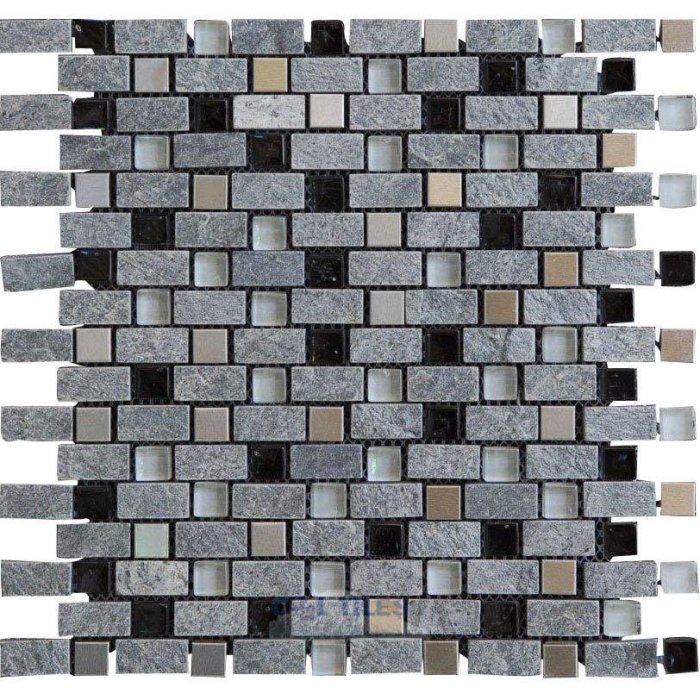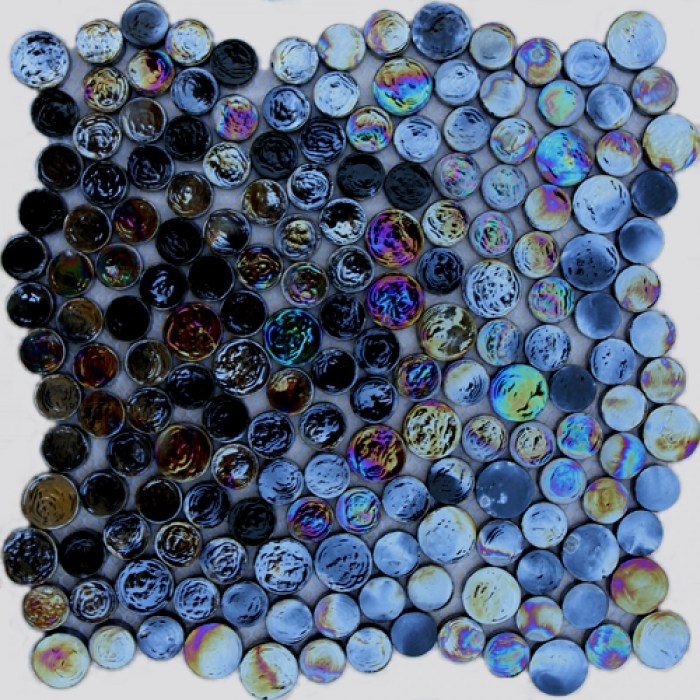Have you ever entered a room and felt an immediate sense of spaciousness? It’s not just the size of the room that creates this effect; it’s the way the light interacts with the surfaces within it. One of the most effective ways to create an illusion of more space is by using reflective glass tiles.
Reflective glass tiles are a versatile and stylish way to add depth and dimension to any room. They can be used on walls, ceilings, and even furniture to create a sense of openness and airiness. In this guide, we’ll explore the principles of reflective glass tiles, their optical properties, and how they can be used to create the illusion of more space in your home or commercial space.
Design and Installation
Reflective glass tiles are a clever way to create the illusion of more space in a room. They work by reflecting light, which makes the room appear larger and brighter.
There are a few things to keep in mind when designing and installing reflective glass tiles. First, consider the size and shape of the tiles. Larger tiles will create a more dramatic effect, while smaller tiles will create a more subtle effect.
Second, consider the color of the tiles. Darker tiles will absorb more light, while lighter tiles will reflect more light. Third, consider the placement of the tiles. Tiles that are placed on the floor will create a more dramatic effect than tiles that are placed on the walls.
Successful Installations
There are many examples of successful installations where reflective glass tiles have been used to create an illusion of more space. One example is the lobby of the Burj Khalifa in Dubai. The lobby is lined with floor-to-ceiling reflective glass tiles, which make the space appear much larger than it actually is.
Another example is the atrium of the World Trade Center in New York City. The atrium is filled with reflective glass tiles, which make the space appear much taller and brighter than it actually is.
Design Considerations
There are a few specific design considerations and techniques that can be used to achieve the illusion of more space with reflective glass tiles. One technique is to use tiles that are the same size and shape. This will create a more uniform look, which will make the space appear larger.
Another technique is to use tiles that are a light color. This will reflect more light, which will make the space appear brighter and larger. Finally, consider the placement of the tiles. Tiles that are placed on the floor will create a more dramatic effect than tiles that are placed on the walls.
Material Properties and Light Reflection
Reflective glass tiles possess unique optical properties that contribute to the illusion of expanded space. These tiles are engineered to reflect and manipulate light in specific ways, creating a sense of depth and spaciousness.
The reflectivity of the tiles plays a crucial role in enhancing the illusion. Highly reflective tiles effectively bounce back light, creating a mirror-like effect that extends the perceived boundaries of a room. This reflected light interacts with other surfaces, further amplifying the illusion of depth and size.
Transparency and Color
Transparency is another key factor that influences the effectiveness of reflective glass tiles. Semi-transparent tiles allow light to pass through while reflecting some portion of it. This interplay of light transmission and reflection creates a dynamic and layered effect, enhancing the illusion of space.
Moreover, the color of the tiles can subtly influence the perceived size of a room. Lighter colors, such as white or cream, tend to reflect more light and create a brighter and more expansive atmosphere, while darker colors may absorb more light and result in a cozier feel.
Types of Reflective Glass Tiles
Various types of reflective glass tiles are available, each with unique characteristics that affect light reflection. Some common types include:
- Mirrored Tiles: These tiles have a highly reflective surface that creates a mirror-like effect, significantly expanding the perceived space.
- Semi-Mirrored Tiles: These tiles offer a balance between reflectivity and transparency, allowing for both light reflection and a glimpse of the underlying surface.
- Textured Tiles: Textured reflective tiles have a surface with raised or etched patterns that scatter light, creating a more subtle and diffused reflection that can enhance the illusion of depth.
Interior Design Applications
Reflective glass tiles can create an illusion of more space by reflecting light and expanding the visual boundaries of a room. They can be used in various areas within a home or commercial space, including:
Walls
- Entryways: Reflective glass tiles can make a small entryway appear larger and more welcoming.
- Living rooms: Used as an accent wall, reflective glass tiles can add depth and dimension to a living room.
- Bathrooms: Reflective glass tiles can create the illusion of a larger bathroom, especially when used in combination with natural light.
Ceilings
- Low ceilings: Reflective glass tiles on ceilings can make a room feel taller and more spacious.
- Sloped ceilings: Reflective glass tiles can be used to create the illusion of a higher ceiling by reflecting light upward.
Furniture
- Tabletops: Reflective glass tiles can add a touch of elegance and create the illusion of a larger surface area on tabletops.
- Cabinet doors: Reflective glass tiles on cabinet doors can make a room appear more spacious and reflect light into the room.
Visual Perception and Cognitive Effects
Reflective glass tiles possess unique properties that can significantly impact the visual perception and cognitive experience of a space. Their ability to reflect and refract light creates optical illusions that alter the perceived dimensions and boundaries of a room.
The reflective nature of glass tiles creates a sense of spaciousness by visually expanding the room. The reflected images extend the perceived boundaries, making the space appear larger than its actual dimensions. This effect is particularly noticeable in smaller rooms, where the illusion of added space can create a more comfortable and inviting atmosphere.
Influence on Mood and Well-being
Beyond their impact on spatial perception, reflective glass tiles also have psychological and cognitive effects. The play of light and reflections can influence mood and well-being. The bright, shimmering surfaces stimulate the senses, creating a sense of energy and vibrancy.
The reflections can also evoke a sense of movement and dynamism, adding interest and depth to a space.
In addition, the use of reflective glass tiles can promote a sense of well-being by enhancing natural light. The tiles reflect and distribute light throughout the room, creating a brighter and more inviting environment. This increased luminosity can boost mood, reduce stress, and improve overall well-being.
Maintenance and Cleaning Considerations
Reflective glass tiles require proper care and maintenance to preserve their longevity and effectiveness in creating the illusion of space. Regular cleaning is essential to maintain their optical properties and aesthetic appeal.
For cleaning reflective glass tiles, use a soft, non-abrasive cloth or sponge with a mild detergent solution. Avoid using harsh chemicals, abrasive cleaners, or scouring pads, as these can scratch or damage the surface of the tiles.
Cleaning Methods
- Dry Cleaning: Use a soft, dry cloth to remove dust and debris regularly.
- Wet Cleaning: For more thorough cleaning, use a damp cloth or sponge with a mild detergent solution. Wipe the tiles in a circular motion, rinsing with clean water afterward.
- Professional Cleaning: For heavily soiled tiles, consider hiring a professional cleaning service that specializes in reflective glass surfaces.
Regular cleaning is crucial to prevent dirt and grime from accumulating on the surface of the tiles, which can diminish their reflective properties and aesthetic appeal.
Final Thoughts
Reflective glass tiles are a powerful tool for creating the illusion of more space. By understanding their optical properties and design principles, you can use them to transform any room into a more spacious and inviting environment. Whether you’re looking to add a touch of luxury to your home or create a more welcoming atmosphere in your commercial space, reflective glass tiles are a perfect choice.



